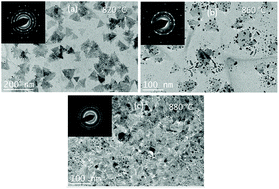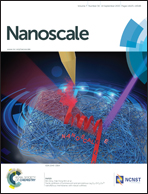In situ degradation studies of two-dimensional WSe2–graphene heterostructures
Abstract
Heterostructures of two-dimensional materials can be vulnerable to thermal degradation due to structural and interfacial defects as well as thermal expansion mismatch, yet a systematic study does not exist in the literature. In this study, we investigate the degradation of freestanding WSe2–graphene heterostructures due to heat and charge flow by performing in situ experiments inside a transmission electron microscope. Experimental results show that purely thermal loading requires higher temperatures (>850 °C), about 150 °C higher than that under combined electrical and thermal loading. In both cases, selenium is the first element to decompose and migration of silicon atoms from the test structure to the freestanding specimen initiates rapid degradation through the formation of tungsten disilicide and silicon carbide. The role of the current flow is to enhance the migration of silicon from the sample holder and to knock-out the selenium atoms. The findings of this study provide fundamental insights into the degradation of WSe2–graphene heterostructures and inspire their application in electronics for use in harsh environments.


 Please wait while we load your content...
Please wait while we load your content...